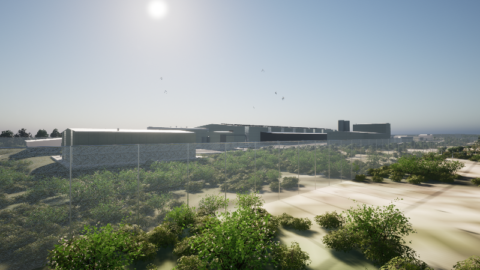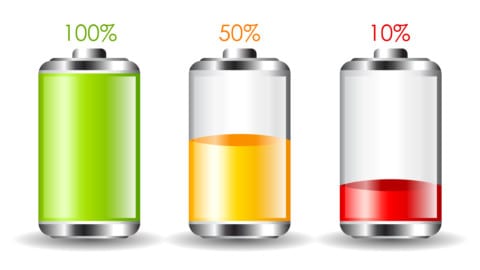Every year, the Water Industry Operators Association celebrates the best of the industry with its Operator of the Year awards. We spoke with four recent winners from around the country to learn a little bit more about the role they play in making the Australian water industry tick.
 Shane Kimber, Shoalhaven Water – NSW Operator of the Year
Shane Kimber, Shoalhaven Water – NSW Operator of the Year
I have been working in a workplace health and safety capacity for Shoalhaven Water Operations, heavily focusing on inspection, testing and monitoring schedules and plans.
Every day is varied especially when dealing with water and wastewater operational issues. My average day can involve site inspections, meetings with operators, contractors and management and computer work, creating spreadsheets for data recording involved with routine inspection programs. I am often called upon to do small projects for operational engineers.
One of the most exciting innovations I’ve seen in the industry came from Kaitlyn Bell, a trainee engineer for Shoalhaven Council. Kaitlyn designed a revolutionary mobile device for measuring the operational performance of sewer pumps.
While attending the WIOA Conference in Canberra, I saw another exciting innovation from a company which displayed a simple but effective rubber flap designed for sewer pump station emergency overflow pipes. It was tough, robust, easy to install, and pressure-operated even if buried.
The biggest challenge we face on a daily basis is the instability of our coastal weather, with the damaging low pressure systems that can dump high volumes of rain in short periods. These events can overload the sewer treatment plants and infrastructure, so controlling this is a real challenge.
Our management has been very proactive in this area, continually updating technology to assist operators in the monitoring of flow levels at sewer pump stations and treatment plants. Also I stay in touch with BOM forecasts and make early adjustments to the plant in readiness for the worst.
What I love about working in water operations is the variation of work, the cohesion between staff members from water and wastewater, and looking after the environment. Of course being privileged enough to achieve my WIOA award, and win the trip of a lifetime, was an incredible highlight too!
 John Holmes, Whitsunday Regional Council – Queensland Operator of the Year
John Holmes, Whitsunday Regional Council – Queensland Operator of the Year
I am the senior operator at Whitsunday Regional Council. My role requires that I work with the operation manager (Peter Stapleton) to ensure all plants are operated at optimal performance and meet all licence conditions and requirements. I also work with Kerry Pearson, from environmental management, and Rick Jennings, from the laboratory, to ensure all environmental and testing requirements are met.
In summary I:
- Manage the operational staff as required
- Operate treatment plants and provide advice to other operators in regards to their treatment plant issues
- Order all of the bulk chemicals for the treatment plants: all testing reagents, and plant equipment required to maintain treatment operation
- Schedule maintenance services to the plant equipment as required
- Am involved in the electrical and mechanical repair and maintenance
- Am involved in WRC capital works programs involving treatment plants
- Work with Peter on improvements to the treatment plants and reticulation network
- Follow up on the training needs of the operational staff
- Follow up on the safety requirements of the operators
- Check all results from external labs for issues.
A typical day starts in the morning with a review of all treatment plant operations for any issues or problems. This allows for issues to be solved and work scheduled, and for any major issues to be passed on to the manager.
I follow up on all work to be performed at the treatment plants; then order chemicals, reagents, parts and equipment as required for all treatment plants. For plants being operated, I check the process and equipment trends; then take samples and test all process streams, collect other samples as required for testing or send them to external labs for testing.
I’ll check all treatment plant equipment, and review all parts of the process to ensure proper operation; and perform maintenance work as required, such as on-line instrument calibrations and preventive maintenance work.
I follow up on the sewage pump station odour dosing program, ensuring all equipment is operating and dosing correctly, then download odour logger information and check for any issues and make changes as required to dosing equipment.
The revolution in programmable logic control of treatment plants and the benefits of instrumentation (both online and in the lab) have had a huge impact on the operations side of the water business.
Changes in the operational process of treatment plants, to save chemicals and increase water quality, have also been big changes, as has the standardisation of treatment plant equipment and the use of higher quality equipment.
Solar power generation and integration with the treatment plant’s power usage have also changed the way we operate. Recently, we’ve also completely reviewed all aspects of the water/sewage treatment and delivery process, as well as our disaster management and the resilience of the water treatment plants and supply to customers.
Whitsunday Regional Council is a cooperative and inclusive workplace, where all staff are included in projects. The water and waste team is very professional and works extremely well together – we’re all very happy to be a part of it.
We face a number of challenges as operators in the water industry. You must ensure you have a good understanding of all processes within treatment plants – the equipment may change, but processes are a constant. An understanding of chemistry is an aid, as treatment plants are essentially big chemical reactors, and sewage treatment plants are biological reactors. Many of the processes we see are common to both.
The aging workforce is a challenge we need to overcome, and we’re working on doing this by choosing good trainees committed to the work and area. All of our staff need to keep up-to- date with all the new innovations within the industry – continuous learning is standard and we must be open to all ideas and input from all people.
Disaster management is also important in our area – we try to over prepare where possible, and be able to stand alone for at least two weeks by ensuring the treatment plants have adequate chemical and spare parts on hand.
I love working in this industry – I enjoy working with the equipment and the process, ensuring it all runs to optimal performance to produce the best quality water at the best price. Most of the time the community never thinks about where their water comes from or where the wastewater goes, but it’s good to know that the work you are doing is making a difference to the community every day.
 Jason Hall, Taswater – Tasmanian Operator of the Year
Jason Hall, Taswater – Tasmanian Operator of the Year
I’m currently employed at the Bryn Estyn water treatment plant, which supplies the majority (approximately 70 per cent) of treated water to the Greater Hobart Area.
My role is Maintenance Relief Operator, covering shift duties as required and performing mechanical maintenance duties on the plant while not relieving shifts. Bryn Estyn is the only WTP manned 24/7 due to its size and mostly manual nature.
Bryn Estyn consists of two treatment plants, one clarification and the other direct filtration. Maintenance consists of pump rebuilds, valve replacements, safety improvements and preventive maintenance.
The treatment plant operator’s daily duties include routine testing of raw and final water, chemical dosing, plant equipment checks, water consumption demands and SCADA observations and optimisation.
The most recent innovation I’ve seen in water operations is the implementation of carbon dosing; this is due to increasing taste and odour issues in the raw water supply.
A new powder activated carbon (PAC) plant has been built; dosing carbon to the clarification plant, while the direct filtration plant has had granulated activated carbon (GAC) added as filter media, the carbon removes Geosmin and MIB compounds from the water reducing taste and odour issues.
The business is going through constant changes since the formation of TasWater with new package plants continuing to be rolled out across the state. This plant, much of which has been operating for around 50 years is in line for planned upgrades to it facilities to ensure it keeps pace with water treatment technology and ongoing water demand.
The main challenge for the Bryn Estyn operator is the water source. The water characteristics and properties of the Derwent River can vary dramatically due to weather conditions and rainfall levels, making it challenging to consistently produce quality water and, at times, keep up with increased demands. The catchment use is also changing with more impacts from human impact.
A lot of work has already been done to improve and replace equipment. The operators work well as a team to achieve excellent water quality.
I love working in the operations area of the water industry, as we are continually learning new skills and applying them to the job. Bryn Estyn is a great place to work and with the challenges changing daily it is rewarding, interesting and enjoyable.
 Daniel Partridge, SA Water – South Australian Operator of the Year
Daniel Partridge, SA Water – South Australian Operator of the Year
It is a great achievement and honour to represent South Australia as the WIOA Water Industry Operator of the year. Winning the award has
given me an opportunity, which I otherwise wouldn’t have had, to learn from operators from all across Australia and New Zealand.
SA Water has a safety culture program called Mate Watch, and as part of that program, I identified two hazards at the plant where I was working, which led to me winning the WIOA award.
Firstly, when a suction hose attached to our Kelly & Lewis three-inch pump was used to clean our contact tank, the grate had to be removed. I noticed that taking away this grate created a fall risk for employees into the three-metre deep tank. I was keen to make this cleaning job safer, so I came up with the solution to adapt scaffolding to fit over the handrails around the tank.
This eliminates the potential for an employee to fall into the tank when the grate is removed.
The second hazard concerned the process for changing over the mixers in the bottom of our reactors. Employees at our plant were required to disconnect a cable holder from the top of a winch, around 2.4 metres off the ground. Due the height of the winch, workers had to either use a ladder or step on the handrail to reach the cable holder, risking a fall.
To fix this problem, I worked as part of a team and we decided to put in a piece of chain which lowered the cable clip. This made it easy to reach without a ladder or using the handrail, eliminating the fall risk for workers.
I wanted to improve efficiency at our plants too. The Heathfield Wastewater Treatment Plant experienced higher than average inflows during the wet winter of 2016. Aluminium sulphate is used to remove phosphorous from wastewater, and at Heathfield we used flow-paced dosing of aluminium sulphate during highly variable flow periods.
I identified an opportunity to improve efficiency within the aluminium sulphate dosing system, by changing from a flow-paced to a fixed-dose system. This reduced chemical use at the plant.
I also suggested using a larger front-end loader to transfer biosolids into our transport container – reducing the time taken for this task from one hour to just 15 minutes.
SA Water’s Mate Watch program prompted me to review the work I was doing and think about how I could make it safer. The Mate Watch program is a behavioural based safety program that encourages employees to look for hazards/potential risks and come up with solutions. It also includes modelling good behaviour.
If you work hard, keep your options open and stay positive, you never know what opportunities may come your way in life and where they may take you.
As part of the WIOA award, I had the opportunity to visit New Zealand to see other operators in action. Prior to this, I hadn’t previously seen a wastewater process which dries out dewatered sludge from a centrifuge in a 100 metre-long glasshouse. When compared with conventional systems, this is really efficient, taking the total solids yield from 20 per cent up to 85-95 per cent.
It was interesting to see that a variable speed drive (VSD) can be incorporated into the pump motor on certain pumps to monitor torque. When torque increases due to “ragging up” (a pump becoming clogged with non-flushable items) the VSD stops the pump, then reverses it to clear the blockage.
SA Water is keen to improve how we manage the turbidity wet rack lines at our plants. A wet rack is where water is pumped to be analysed for turbidity – a key test for water quality. Fortunately, as part of the tour we were able to visit a number of water and wastewater treatment plants, which have wet racks, to get ideas.
I have taken details of several pumps that supply water to wet racks with a view to trialling some these over the next few months. I also learned that the water catchment environment is quite different on New Zealand’s South Island compared to South Australia.
In my home state raw water from our catchment areas requires filtration barriers and treatment because it contains contaminants that enter the water from the environment. By contrast some water processed at the South Island’s water treatment plants is pure enough to be pumped straight from the bore to the customer without any treatment.
I think it’s important for operators to develop an in-depth and current knowledge of pump products on the market. It’s vital to get the right pump that is durable and can achieve the required flows rates and pressures for the job you need it do.
















